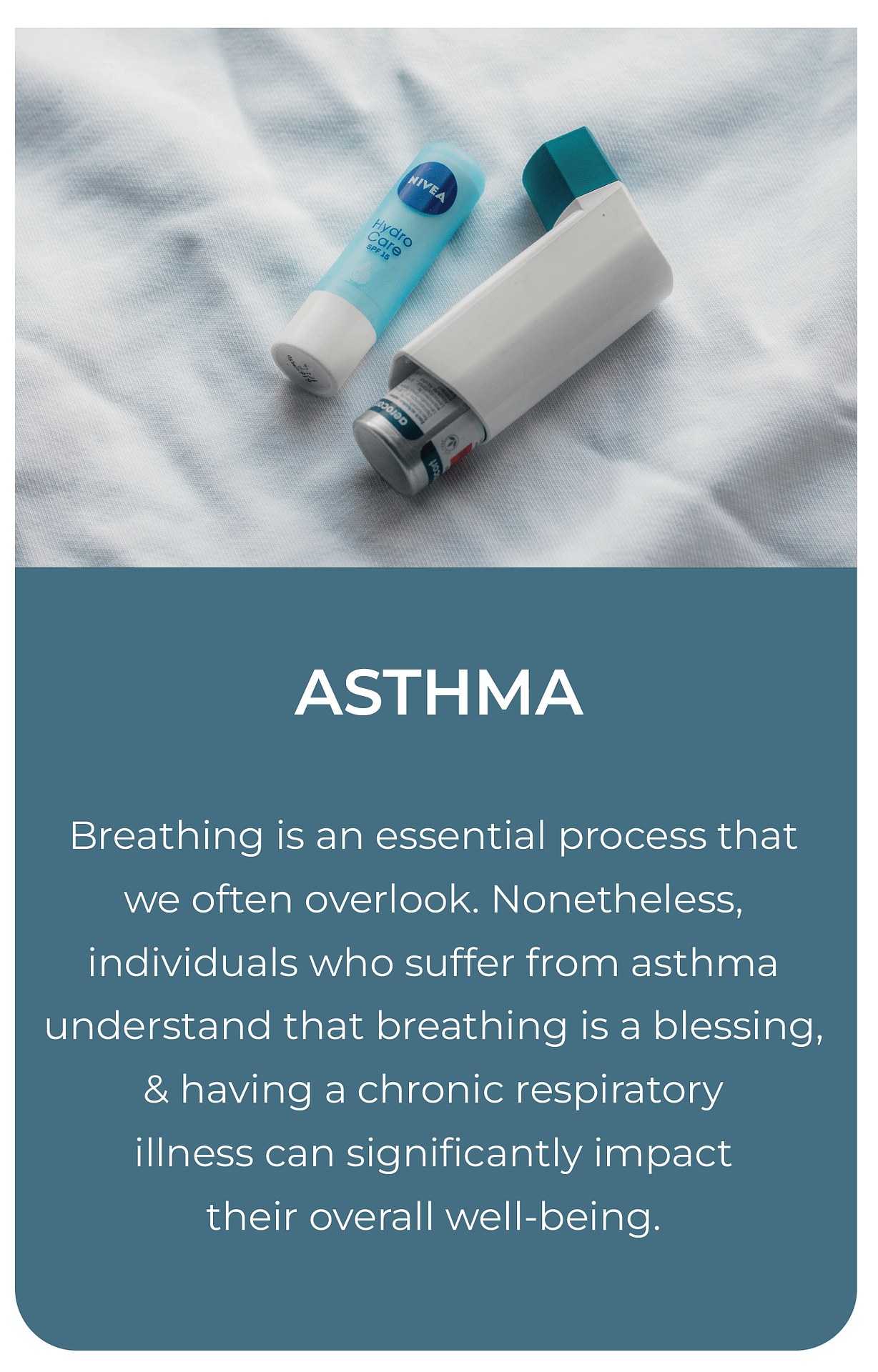- cedarbraeph@gmail.com
- +1 416-283-1786

You would say it impacts your entire life and everything depends on your respiratory system. That is correct!
As we breathe continuously, we may overlook how it can influence our daily life positively or negatively. Whether your respiratory problems are mild or chronic, your pharmacist can assist you in understanding how to manage them.
Several factors can initiate acute asthma symptoms or worsen the condition. It is crucial to recognize the triggers and take steps to avoid them whenever feasible. Research indicates that most people who use inhaled medication commit at least one error that may impact the amount of dose they receive. To ensure that you are employing the correct technique, speak with your pharmacist.




Taking care of your respiratory health involves more than just following a treatment plan, making lifestyle changes can also be beneficial. There are several respiratory health conditions that can impact your breathing. Let's explore some of them.
Bronchitis is a condition that involves inflammation of the bronchi – the airways that transport air to the lungs. In most cases, bronchitis is caused by a virus and is self-limiting, lasting a few days and resolving without intervention, similar to a cold or flu.
The main approach is to alleviate the symptoms of coughing, fever, and nasal congestion. However, in some cases, bacterial infections can cause bronchitis, which may not heal without intervention. Antibiotic therapy, like penicillin, is usually required in such cases.
Distinguishing between bacterial and viral bronchitis can be done by considering two factors: the duration of the symptoms and the color of the secretions. If the symptoms worsen progressively and persist for more than a week, it is more likely to be bacterial bronchitis.
Additionally, greenish mucus can indicate a bacterial infection, while clear or yellowish secretions typically indicate a viral infection.
To put it simply, laryngitis refers to the inflammation of the larynx, which is the structure housing the vocal cords between the pharynx and trachea. It is mostly caused by a viral infection, overuse of the vocal cords, or exposure to irritants such as cigarette smoke or gastric acid.
Bacterial or fungal infections, as well as cancer, are fewer common causes of laryngitis. Common symptoms include a hoarse or temporarily lost voice, tickling in the throat, dry cough, sore throat, and fever.
To diagnose laryngitis, a physical examination is usually sufficient, but patients with chronic hoarseness should see an ENT specialist. To rule out cancer, the specialist may perform a throat examination called a laryngoscopy. Resting the voice, avoiding throat clearing and whispering, and using a humidifier can help reduce inflammation and alleviate the pain of a sore throat.
Addressing underlying causes is also important. Pain medication can relieve symptoms caused by an inflamed larynx, and corticosteroids can reduce swelling of the vocal cords in some cases. If the laryngitis is bacterial in origin, the doctor may prescribe antibiotics.
Whooping cough is a contagious illness that is caused by the Bordetella pertussis bacteria. It can affect individuals of all ages, but it typically affects children under 2 years old. The symptoms of whooping cough can resemble those of other infections, which can make it difficult to diagnose.
The symptoms usually appear 7 to 10 days after exposure to the bacteria and initially resemble a common cold that lasts for about 2 weeks. This is followed by fits of coughing that can be accompanied by vomiting and a choking feeling. The end of a fit is sometimes marked by a whooping sound when the individual takes a deep breath.
Fever is rare, and the illness can last for 6 to 10 weeks. Young children are at risk of serious illness and may need hospitalization.
Whooping cough is spread through nasal and throat secretions during coughing, and individuals remain contagious until 3 weeks after the cough begins. Antibiotics can reduce the length of the contagious period to 4 to 7 days, and it is recommended that all members of the infected individual’s family be treated.
Chronic Obstructive Pulmonary Disease (COPD) is predominantly caused by smoking, accounting for 80% to 90% of all cases. If you have COPD and you’re still smoking, quitting smoking is the only way to slow down the progression of the disease. Even if you’ve been smoking for years, quitting is always worthwhile.
However, quitting smoking is difficult. Your pharmacist can offer a range of resources to help you quit. They may suggest nicotine replacements such as patches, gum, lozenges, sprays, or inhalers to help you overcome your nicotine cravings. Your pharmacist will work with you to determine the type and dosage of product that is best suited for your smoking habits and lifestyle.
Your doctor may also prescribe medication to assist you in quitting. For more information on this, speak to your pharmacist or doctor.
If you have attempted to quit smoking in the past, your pharmacist can help you identify which methods worked for you and which obstacles caused you to start smoking again. By recognizing your strengths and weaknesses, you can develop a more effective strategy and increase your chances of success in future quit attempts.
Your pharmacist is a healthcare professional who is available to support you throughout the smoking cessation process. They can answer any questions you may have and provide assistance at every stage. Although quitting smoking is challenging, it is the most beneficial step you can take to improve your quality of life.